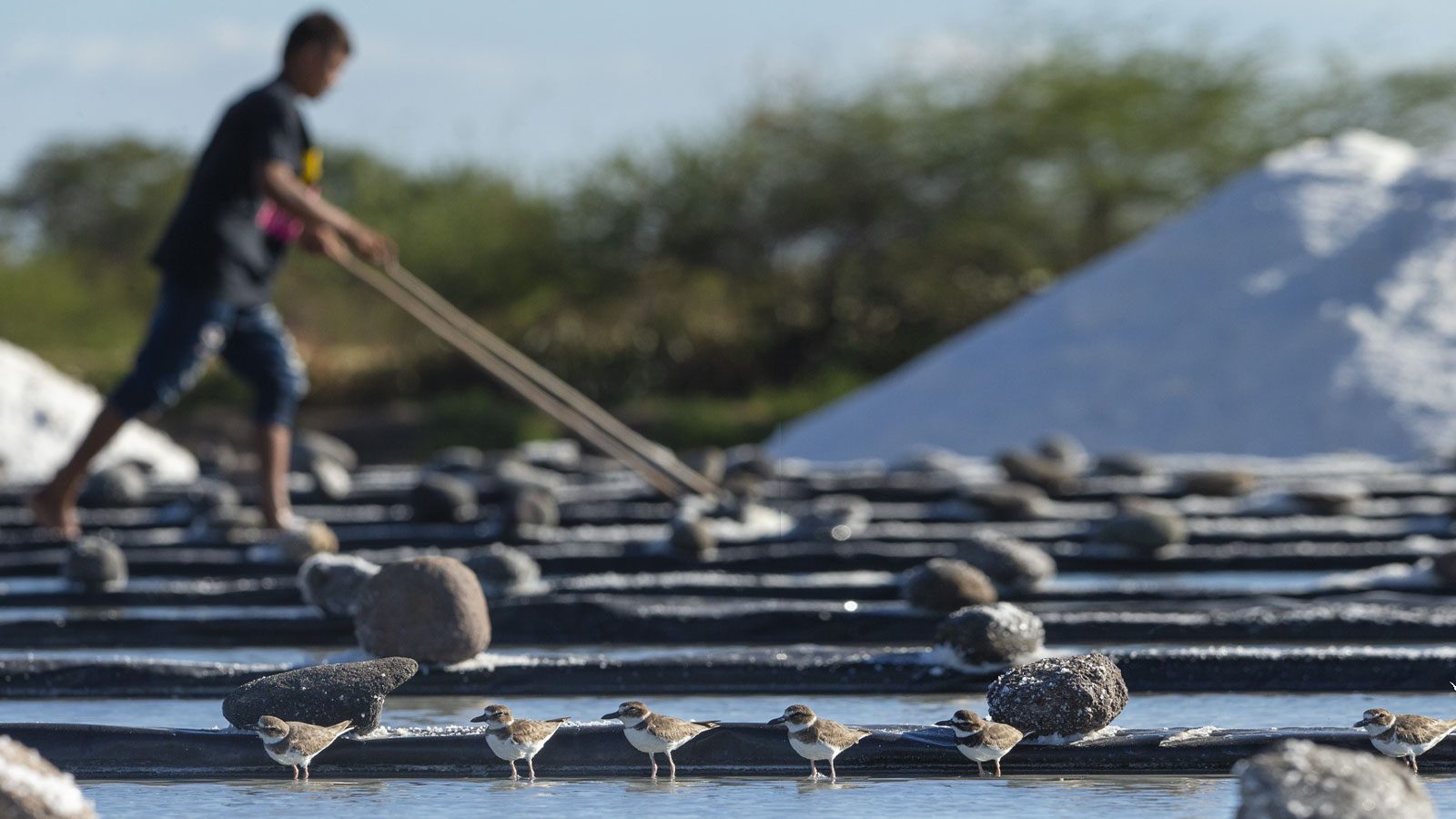In the San Lorenzo Bay of Honduras, salt farms provide golden opportunities for sustaining generations—of people, of shorebirds, of an artisanal way of life.
From the Summer 2024 issue of Living Bird magazine. Subscribe now.
Haga clic aquí para leer en español.
“I am the third generation of a family of artisanal salt producers in San Lorenzo,” says Julia Salazar proudly. She is the daughter of Julio Salazar, who has been harvesting salt from this bay on the Pacific coast of Honduras since 1988—and granddaughter of Sabas Nicolas Salazar Molina, who came to the bay in 1928 from an inland town, attracted by the opportunity of this precious mineral.
“As a child,” Julia Salazar recalls, “I remember waking up at dawn and watching the collection of what people here call oro blanco [white gold].”

In Honduras all salt production is artisanal, a small-scale agricultural operation mostly conducted by hand. Workers sweep shallow pans of seawater with push brooms to pile up mounds of salt. The region around San Lorenzo Bay supplies most of the country’s salt, upwards of 75% of all the salt harvested in Honduras. But beyond the lapping waves of the Pacific and the massive mounds of white gold swept up by the salt harvesters, Julia Salazar remembers something else distinctive from her childhood growing up on San Lorenzo Bay—the birds. And in particular, one bird that captured her heart: the Black-necked Stilt, known as soldadito [little soldier], because the way it walks resembles the way soldiers march.
“It was this species that caught my attention the most and made me contemplate birds more,” she says, recalling how as a little girl she became fascinated with the behavior of the stilts walking around looking for food, and nesting in the saltgrass just above the flats of the artificial lagoons inside the family salt farm. “What interested me the most was how both the male and female protect their nests and chicks,” says Salazar, who today is a mother of three. “I felt very identified with that.”
That maternal bond between Salazar and the stilts has grown into her life’s work, as she is now advocating for the protection of these shorebirds and their nests in the San Lorenzo Bay. For the past decade, she has been a leader in a cross-disciplinary effort among businesses and biologists to raise awareness and safeguards for the mangrove forests and intertidal wetlands that make this bay one of the most important ecosystems in the country. In 2022, the accumulation of data about shorebird concentrations in the region resulted in the designation of the Punta Condega–Jicarito wetland system as a 112,000-acre site of regional importance in the Western Hemisphere Shorebird Reserve Network—the first WHSRN site in all of Honduras.




Salazar’s journey to help gain national and international recognition for the San Lorenzo Bay has been a winding one, from tourism to birding to fostering a sense of community empowerment among the salt farmers. But the one constant has been the drive and vision of Julia Salazar herself.
“What stands out most about her is her leadership,” says Osvel Hinojosa-Huerta, director of the Cornell Lab of Ornithology’s Coastal Solutions Fellows program, which Salazar joined in 2023. “She has managed to bring together a large number of salt producers and helped them learn about shorebirds and the role that salt production plays in their conservation.”


A Tradition More than Two Millennia Old
The practice of harvesting salt in the San Lorenzo Bay goes back more than 2,000 years before the Spanish conquest, when the Indigenous Chorotega people migrated from Mexico and settled in what is now El Salvador, Honduras, Nicaragua, and Costa Rica. Their livelihoods revolved around fishing, mangrove logging, and salt production—always deeply intertwined with the ebb and flow of the tides.


The Chorotega harvested salt by evaporating seawater through boiling—a practice that required cutting down mangrove trees for firewood, and that persisted with the arrival of the Spaniards at the beginning of the 16th century. Salt harvesting was important for the preservation of fish and meat. The Spanish also used salt to make their currency. Colonial mining activities near Tegucigalpa, the capital of Honduras, required salt for the amalgamation process of silver and gold, which spurred the salt industry in the Gulf of Fonseca.
The higher demand for salt called for more effective and less costly processes. At the beginning of the 20th century, the salt industry began to rely on shallow tanks called dry-racks that capture sunlight to improve the evaporation of seawater. This innovation not only improved the quality and yield of salt, it relieved pressure on mangrove forests. And, the salt pans created new habitats for shorebirds to wade through and pick out aquatic invertebrates in the shallow evaporating pools of sea water. Along with its extensive muddy plains and estuaries, the San Lorenzo Bay today is considered vital breeding and migratory stopover habitat for shorebirds.
“The Gulf of Fonseca (which includes San Lorenzo Bay) is of great importance for several species of shorebirds, such as the Semipalmated Sandpiper and Least Sandpiper, because it is a resting and feeding area,” says Nicaraguan bird ecologist Salvadora Morales, a conservation specialist for the Western Hemisphere Shorebird Reserve Network. “Some species like the soldadito even use it as a breeding area.”






In 1999 the San Lorenzo Bay and six other neighboring areas in the Gulf of Fonseca gained recognition as a wetland site of international importance under the Ramsar Convention, partly due to the significant congregations of shorebirds. The designation also acknowledged the region as crucial habitat for hawksbill and ridley sea turtles, American crocodiles, and imperiled mangrove intertidal wetlands.
“The site, mostly mangrove forest, is one of the country’s most important ecosystems,” reads the official declaration for Ramsar site number 1000.
But despite the lofty declaration, the Ramsar designation did little to mitigate the gulf’s vulnerability to national and international corporate interests, like expanding agricultural development for growing melons and sugarcane, and the burgeoning shrimp industry. Since the middle of the 20th century, the Gulf of Fonseca has lost about half of its original wetland forest cover. “The issue lies in having protective declarations without sufficient funds for implementation,” laments Jorge Palma, Julia Salazar’s husband and the technical director of a national park in central Honduras.


As San Lorenzo’s Birds Gain Attention, Ecotourists Take Note
Julia Salazar graduated from college in 2009 and returned home to her family’s salt farm—the Salinera Santa Alejandra—with a degree in tourism from the Technological University of Honduras. At school she gained experience conducting tours for the public, and now she had a desire to help Hondurans learn about the artisanal culture of the salineras of San Lorenzo Bay.
She started by creating a tour of her family’s salt farm, and she named her project Sal Para La Conservación [Salt for Conservation], with a broader mission to protect the marine-coastal ecosystems of southern Honduras. Ultimately she hoped to unite all of San Lorenzo’s salt producers under the banner of environmentally friendly productivity.
In 2012 Salazar launched a simple Facebook page offering educational tours to anybody curious to learn about salt production and its ecological benefits. School teachers and university professors immediately responded to sign up for the tours. But then Salazar says the tours started attracting a different kind of customer: “We curiously also started receiving visits from birders, attracted by the ease that the salt farms provide for shorebird watching … tourists from Nicaragua, El Salvador, and Honduras, and then from the U.S.A. and Europe.”




Suddenly Salazar had a renewed interest in the Black-necked Stilts that she had watched as a little girl, and she took closer notice of the little rock-like brown eggs on her family’s salinera along the shores of San Lorenzo Bay.
“I discovered small nests made with seashells, small rocks, and branches, containing three to four eggs guarded by parents willing to fight to protect them,” Salazar says. “I learned that they always nest before the beginning of the rains on the shores of the lagoons in the salt farms. On my own initiative I started monitoring the lagoons monthly in search of nests or chicks.”
Salazar’s own observations documented that Black-necked Stilts also nest in shrimp farms, though she says they find artisanal salt farms to be a more peaceful environment for raising chicks: “There is far less disturbance than in other places.”


Appreciation Grows for the Value of Shorebirds—and the Hemispheric Importance of San Lorenzo Bay
Around 2014, Salazar’s salt farm tours attracted biologists from Aves Honduras, a nonprofit ornithological association, who started conducting official yearly shorebird population surveys in San Lorenzo Bay. The shorebird census data coming out of San Lorenzo Bay then attracted the attention of biologists from the Western Hemisphere Shorebird Reserve Network, an international conservation science partnership that has identified and seeks protection for about 120 critical-habitat sites for shorebirds throughout the Americas.
“I accompanied a biologist from Aves Honduras to observe the behavior of Himantopus mexicanus [Black-necked Stilt] and Anarhynchus wilsonia, known as the Wilson’s Plover,” Salazar says. These experiences marked a significant shift in her relationship with shorebirds. While she initially focused her efforts for Sal Para La Conservación on organizing tours and promoting salt production, she felt her role evolving into gathering essential data to understand how salt farms support shorebird habitats.
But first, she would have to persuade her father. Because like the vast majority of salt farmers and neighboring shrimp farmers in the bay, Julio Salazar thought the birds were a threat.
“We thought their droppings somehow affected the salt,” he says. He also thought the shorebirds depredated a shrimp-farming plot he was operating: “I thought they ate them. So I used to shoot them with the shotgun.”
Undeterred, Julia Salazar began promoting shorebird watching on the Sal Para La Conservación tours, and in 2020 she parlayed her own informal bird surveys on the salt farms into a staff position with the Western Hemisphere Shorebird Reserve Network, where she became the salt and shorebirds conservation specialist for the WHSRN Flyways Program. Her job focused on developing a shorebird-conservation-oriented salt-production assessment, establishing shorebird-friendly salt production best practices, and identifying the threats and benefits to shorebirds at salt production sites.
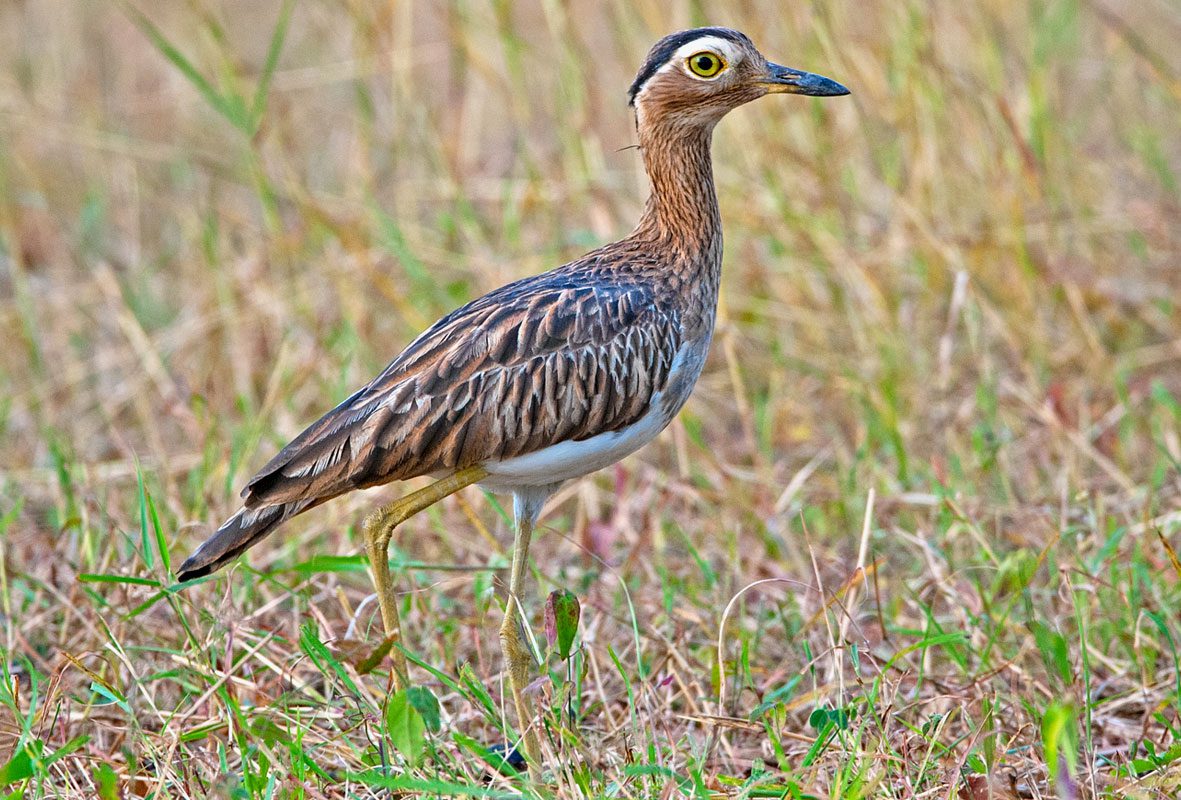



Shorebird surveys conducted through WHSRN and Aves Honduras in the San Lorenzo Bay and surrounding areas yielded significant concentrations—more than 12,000 Western Sandpipers counted in one place, and another count of 5,000 Semipalmated Sandpipers, a bird cited as a Tipping Point Species in the 2022 State of the Birds report. (Tipping Point Species have declined 50% in the past 50 years, and are on track to lose another half of their existing population in the next 50 years.)
At high tide, one of the counts found a gathering of more than 100 American Oystercatchers, including some with leg bands that indicated they had been marked on their breeding grounds from Massachusetts to Florida by U.S. Fish and Wildlife Service biologists. Other counts tallied mixed-species clusters of more than 20,000 sandpipers, stilts, and avocets—including Stilt Sandpiper and Whimbrel, both Tipping Point Species.
The robust shorebird data made the case for the first Honduran WHSRN Site of Regional Importance, designated in 2022 in the Punta Condega–El Jicarito wetlands ecosystem in the eastern Gulf of Fonseca. It also became the first declared WHSRN site that hosts significant numbers of Double-striped Thick-knees, a large shorebird species that ranges from Central to South America.
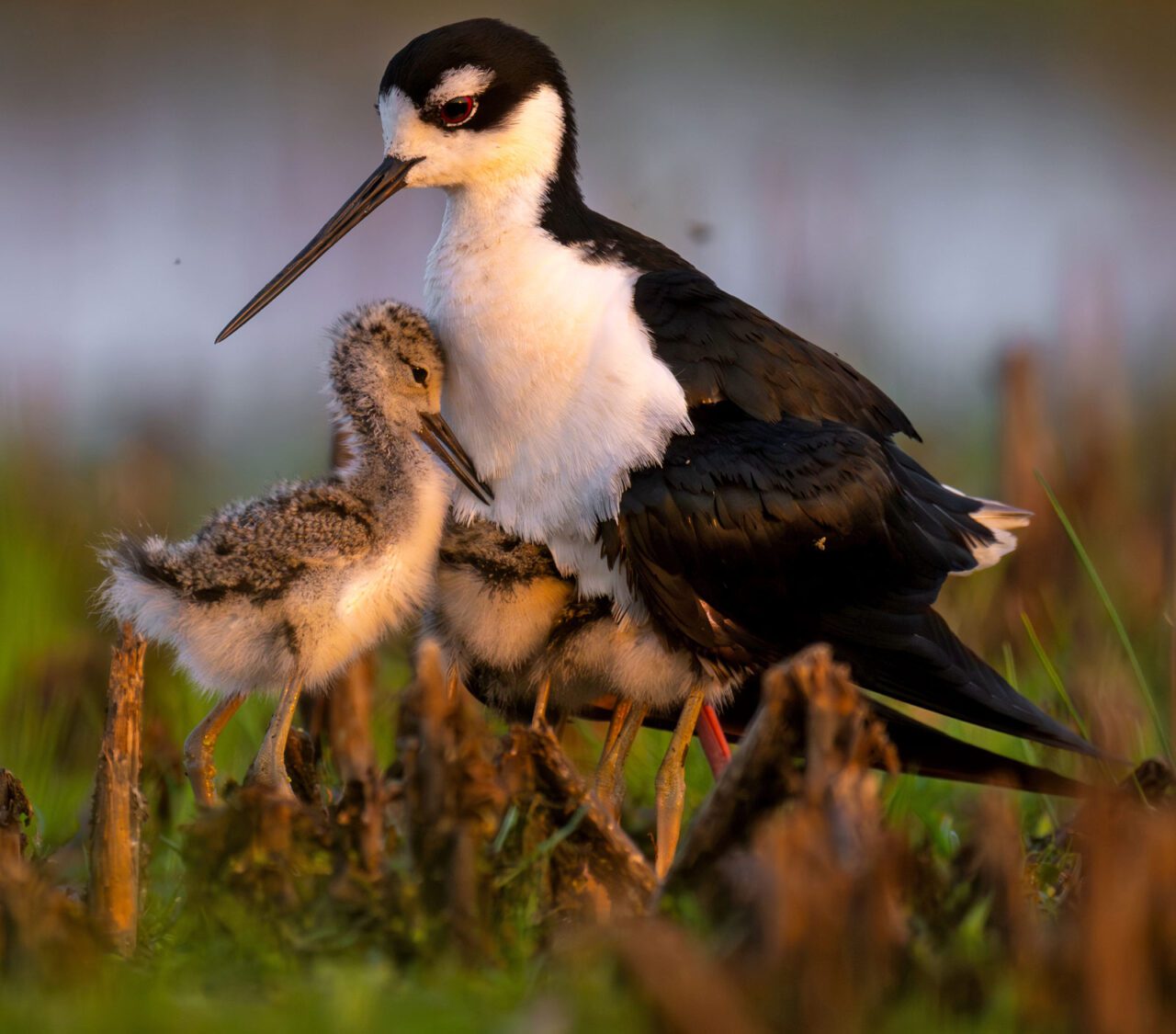



“The declaration of an important site for Punta Condega-El Jicarito System is an opportunity for local actors to carry out concrete habitat management actions for the conservation of shorebirds,” says Morales, the WHSRN shorebird conservation specialist. “We have already managed to get shrimp farms in the area to join the network for bird monitoring.”
All the attention for shorebird habitat around San Lorenzo Bay has raised the profile of the Sal Para La Conservación tours. About 5,500 tourists and students have taken the tours to date, including the U.S. ambassador to Honduras.
“We became a hotspot for birdwatchers,” says Salazar, who says the birders helped change her father’s mind about the birds. Now the alternative revenue generated by the tours represents 5% of the salt farm’s annual income, and a model is being established for bird-friendly salt production. “My dad has a different mentality and participates in the tours, welcoming guests and showing them the company his father founded.”
In essence, Salazar says the spirit of her project is promoting a sense of belonging among San Lorenzo’s salt producers, to the surrounding nature on which they depend—and also to the craft of their work.
“When we allow the producer to be part of these initiatives and show them the amazement and curiosity of many about their work, we are opening important paths to add productive sectors to the conservation of the natural environment of the south of Honduras,” she says.


Official Protection, and a continuing role for ecotourism
In March 2023 the government of Honduras officially ratified the WHSRN site declaration of the Punta Condega–El Jicarito wetlands ecosystem with Legislative Decree 5-99-E, which classified the land under the category of Habitat Management.
But Salazar fears that, as with the Ramsar site designation 25 years ago, the actual conservation impact could be minimal, as the Habitat Management designation included no action plan to bolster management and preservation.
Given the low levels of state investment that the central government can put into Habitat Management lands in southern Honduras, Salazar sees birding tourism and sustainable, artisanal salt farms as the best hope for ensuring the future of San Lorenzo Bay as crucial habitat for tens of thousands of shorebirds. Last year, in a presentation to the Coastal Solutions Fellows program at the Cornell Lab, she spoke about her vision for integrating salt production and shorebird conservation in the Gulf of Fonseca. Salazar’s talk deeply impressed the administration of the CSF program, which funds cross-disciplinary initiatives in nine Latin American countries along the Pacific Flyway to pilot innovative science-based projects that benefit shorebirds and human communities.




“Coastal Solutions projects need to offer solutions to implement effective conservation strategies that are based on the participation of different disciplines and sectors, especially local communities and stakeholders, and should include governance mechanisms, such as new public policies, to guarantee the success of these initiatives in the long term,” says Osvel Hinojosa-Huerta, the CSF director. “Julia’s project excelled at covering all of those requirements.”
Salazar was chosen as a Coastal Solutions Fellow to launch a shorebird conservation initiative that promotes the issuance of environmental licenses for salt farms, the development of alternative revenue streams for salt producers, and the celebration of local, artisanal salt traditions to position San Lorenzo Bay as a tourist destination. With her CSF project, she is now working with 78 other salt producers in the bay (about a quarter of whom are women) to help them replicate the success at her family’s salinera, turning birdwatching tourism into an additional, sustainable source of revenue. (Read about the success of a separate salt-and-shorebirds project happening in Guatemala.)
As with her father, Salazar’s work with other farmers in the bay begins with explaining that shorebirds are not a threat to salt quality or shrimp production. On the contrary, they are bioindicators of marine-coastal ecosystem health. Salazar says she assures locals that shorebirds typically don’t eat shrimp, but prefer small worms, mollusks, and crustaceans that live underground. And due to the hemispheric migrations of some shorebird species, from Alaska all the way to Chile and Argentina, the birds act as a link between distant ecosystems—their defecation doesn’t spoil the salt, but rather circulates nutrients and makes ecosystems more productive.
The locals say that Salazar’s outreach has opened a lot of eyes about the rich natural resource of shorebirds in San Lorenzo Bay.
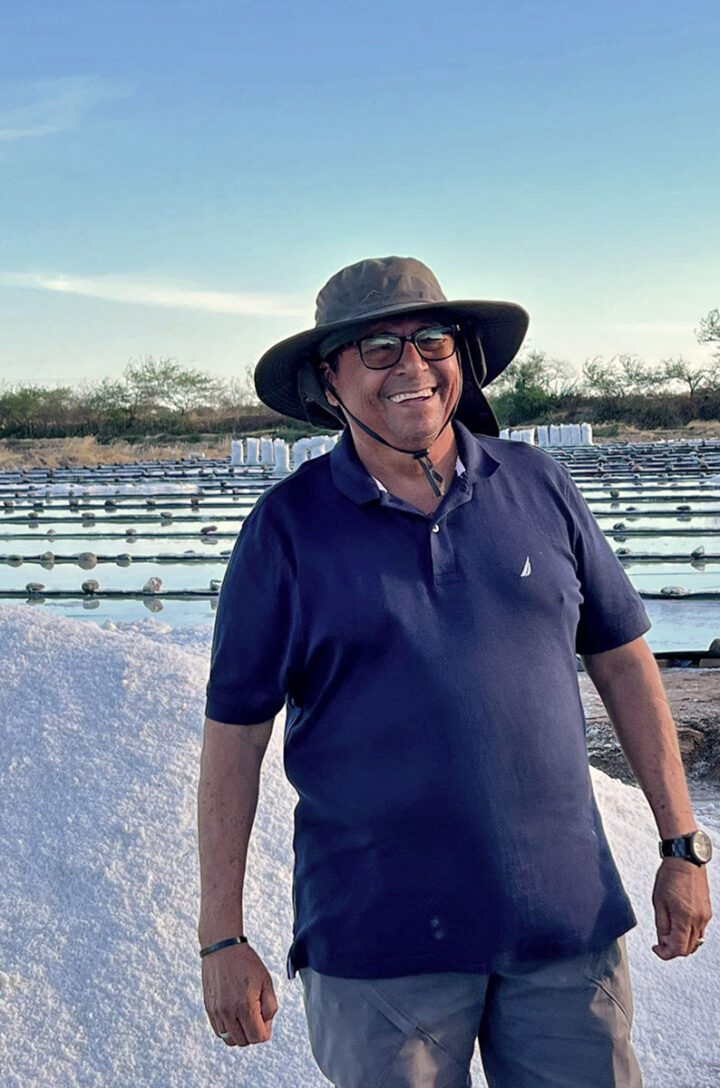





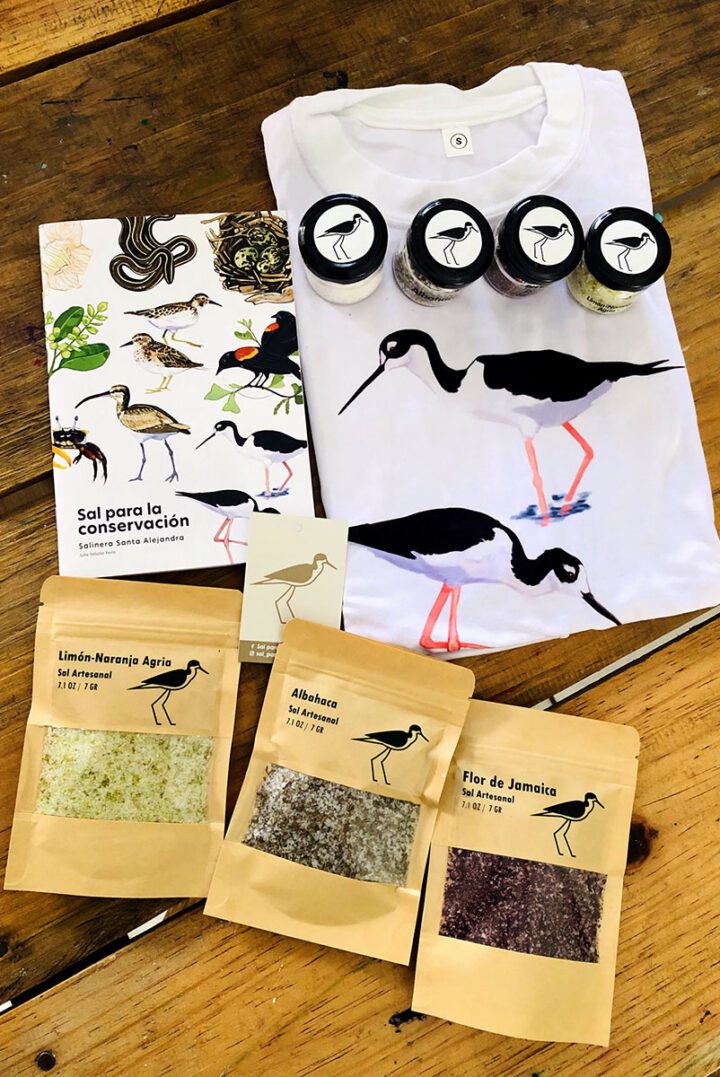

“Julia Salazar came to teach us the true importance of migratory birds in the environment,” says Marcio Molina, a salt producer in the bay since 1982. “I believe that the entire salt production sector was totally unaware of these birds, and now we have begun to value what it means to care for them and support them when they pass through.”
“After Julia brought us this knowledge, I began to stop and look at the birds, differentiate them, and see their shapes and colors,” says Delia Hernandez, another of the San Lorenzo salt producers. “That has helped me understand that sometimes we truly do not value what we have because we know nothing about it.”
Ultimately, Salazar sees the integration of shorebirds into salt production as a potential way to enhance salt product certifications, thus boosting prices. She says it’s a way to incentivize salt farmers toward ecosystem protection, and away from farm expansion into protected areas.
“Expanding land doesn’t invariably equate to increased revenue,” she says.
As she continues to recruit the salt producers as allies of conservation, Salazar and other partners in Sal Para La Conservacion wear T-shirts adorned with a Black-necked Stilt—a symbol of the union between shorebirds and all natural life of San Lorenzo Bay, and of the historical and cultural legacy of artisanal salt production.
And to this day, Salazar continues to walk her family’s salinera and watch the stilts, checking in on their nests.
“After so many years, it is still fascinating every time,” she says. “It still feels like a new adventure.
“They are like old friends you are happy to see again. I can’t imagine the salt farm without them.”
About the Author
Jorge Rodríguez is a freelance science journalist who lives in Guatemala City, Guatemala. After working for the Guatemalan newspapers Prensa Libre and Siglo Veintiuno, Rodríguez became a freelance journalist specializing in stories about sustainable development, the environment, and Indigenous peoples. His writing has been published by National Geographic, Mongabay, the Daily Beast, and the Earth Journalism Network. In 2015 he founded the online news website Viatori, which focuses on climate change, science, sustainability, and Indigenous peoples issues in Guatemala and the rest of Central America.
About the Photographer
Jesús Moo Yam is a freelance conservation photographer in Campeche, Mexico, where he also leads photography and birding workshops. His photos have been published in the American Birding Association’s Birding magazine.
About The Coastal Solutions Fellows Program


Since 2019 the Cornell Lab of Ornithology’s Coastal Solutions Fellows program has empowered 30 young scientists, engineers, architects, and policy experts from Mexico to Chile to work together and invent new approaches to habitat conservation that can turn around the Western Hemisphere’s shorebird declines.
“We are bringing together the best and brightest young Latin American scientists and innovators to think differently, work in concert with communities, and achieve remarkable on-the-ground conservation results,” says Osvel Hinojosa-Huerta, CSF program director.
CSF projects integrate land-use planning and conservation policy to work with and alongside communities on changing behaviors and creating laws for sustainable conservation. In five years, the program has helped protect more than 286,000 acres of shorebird habitat through management agreements, conservation easements, local ordinances, and national regulations. Altogether, these habitat victories have directly benefitted populations of 28 priority shorebird species, including Snowy Plovers, Hudsonian Godwits, and Whimbrels. Learn more more in the Coastal Solutions Fellows program Impact Report.—Gustave Axelson
In Guatemala, Another Salt-for-Shorebirds Effort Takes Off


Along the Pacific Coast of Guatemala, Cornell Lab of Ornithology Coastal Solutions Fellow Varinia Sagastume is implementing a strategy similar to Julia Salazar’s project in Honduras—integrating birdwatching tourism into shrimp and salt production, and generating a sense of responsibility and connection with nature among local communities.
In 2021, the project trained 36 residents of Sipacate, a small coastal village that depends on salt production, and supported them in creating bird monitoring group in the salt flats. Fifteen women from this group became certified tour guides by the Guatemalan government, and they were also trained to contribute data to biological research groups studying Guatemalan marine coastal ecosystems.
The emergence of birding tour guides in this economically challenged area created a new and environmentally sustainable job market. In the last four years, birding has become a very popular activity, with highly sought-after shorebirds such as White-rumped Sandpiper and Hudsonian Godwit making stopovers along the Guatemalan Pacific.
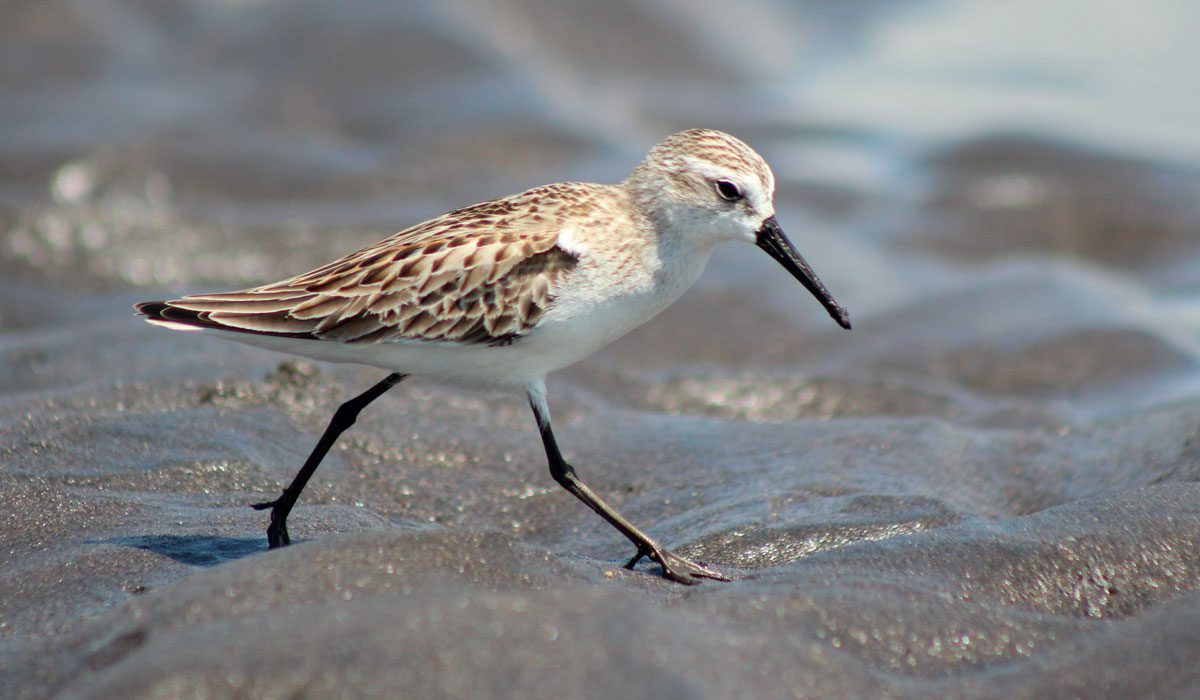

As with Julia Salazar’s Sal Para La Conservacion initiative in Honduras, this project is mobilizing locally led conservation efforts that emphasize the importance of ecosystem contributions to people’s livelihoods.
“It is important that we take actions to protect these sites,” says Sagastume, who is a conservation specialist for Fundación Defensores de la Naturaleza as well as a Coastal Solutions Fellow. “If we don’t, not only does it affect the birds and other animals that live in estuaries, but also the productive economic and social systems that develop in and around these ecosystems.” —Jorge Rodríguez

